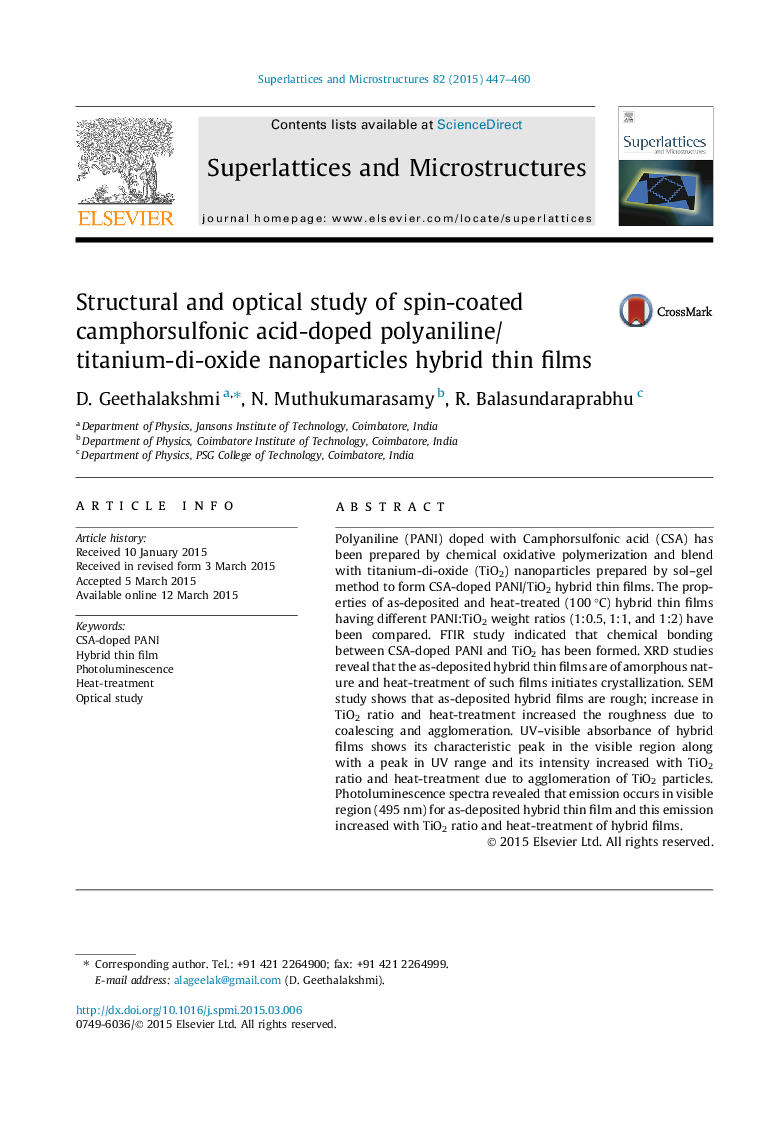| Article ID | Journal | Published Year | Pages | File Type |
|---|---|---|---|---|
| 1553229 | Superlattices and Microstructures | 2015 | 14 Pages |
•Preparation of this hybrid blends in powder form and dissolving next in the solvent.•Crystallizing of CSA-doped PANI/TiO2 hybrid thin film by slow heat-treatment.•New insight brought in comparing heat-treated and as-deposited hybrid thin films.
Polyaniline (PANI) doped with Camphorsulfonic acid (CSA) has been prepared by chemical oxidative polymerization and blend with titanium-di-oxide (TiO2) nanoparticles prepared by sol–gel method to form CSA-doped PANI/TiO2 hybrid thin films. The properties of as-deposited and heat-treated (100 °C) hybrid thin films having different PANI:TiO2 weight ratios (1:0.5, 1:1, and 1:2) have been compared. FTIR study indicated that chemical bonding between CSA-doped PANI and TiO2 has been formed. XRD studies reveal that the as-deposited hybrid thin films are of amorphous nature and heat-treatment of such films initiates crystallization. SEM study shows that as-deposited hybrid films are rough; increase in TiO2 ratio and heat-treatment increased the roughness due to coalescing and agglomeration. UV–visible absorbance of hybrid films shows its characteristic peak in the visible region along with a peak in UV range and its intensity increased with TiO2 ratio and heat-treatment due to agglomeration of TiO2 particles. Photoluminescence spectra revealed that emission occurs in visible region (495 nm) for as-deposited hybrid thin film and this emission increased with TiO2 ratio and heat-treatment of hybrid films.
